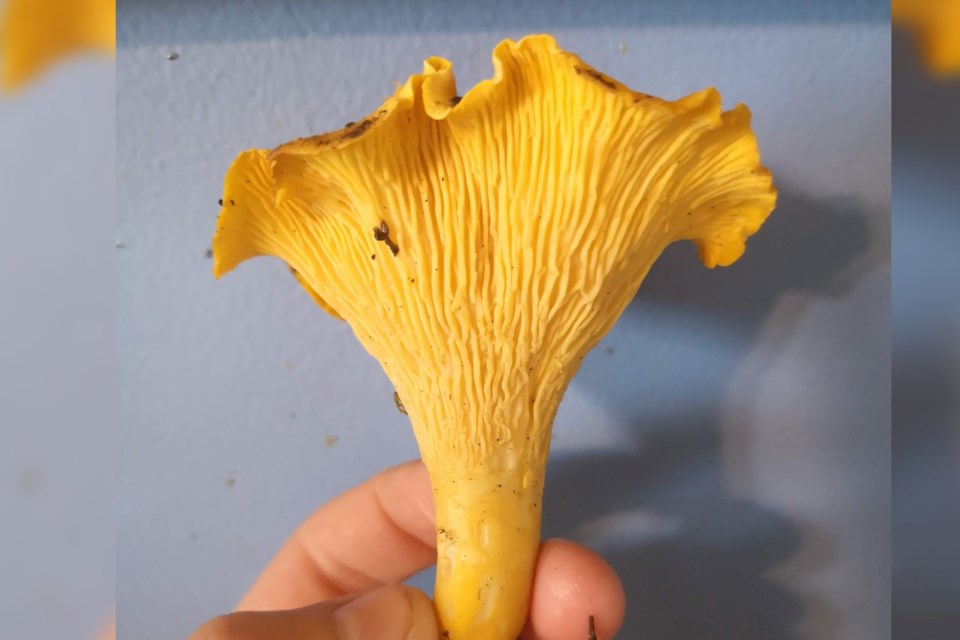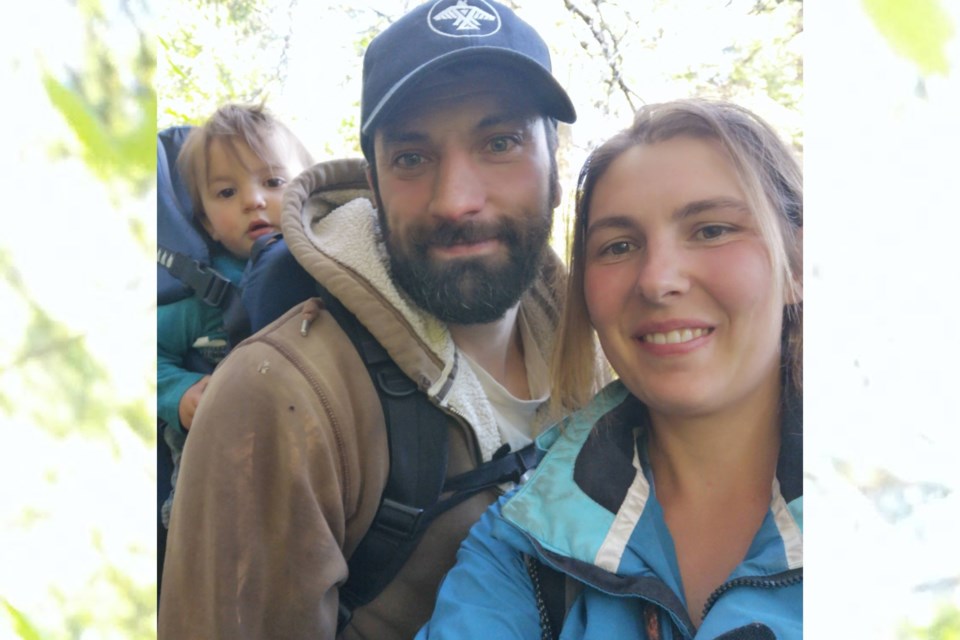Foraging for mushrooms and plants in the forest is not only a great pastime and way to spend time in the great outdoors, but also, like in the case of Brittany Rantala-Sykes and Ivan Vincent from Ugly Barn Farm, you might just fall in love.
Rantala-Sykes, who is a botanist, told Sudbury.com she and Vincent would spend dates taking walks in the forest; she would look at plants and he would hunt for mushrooms.
“We bonded, and that one thing led to another,”
“Another,” in this case, means two children, and a mushroom business, selling spore kits, as well as finished fungi, from their home at Ugly Barn Farm and at Sudbury’s farmers’ market.
Hunting for plants and mushrooms is a challenging, but exciting, hobby, said Rantala-Sykes.
“I think you become a little bit addicted to going out,” she said. “Sometimes you win, sometimes you lose, but that challenge is also what makes it exciting.”
Some foragers choose to head out with a specific mushroom or plant in mind, while others are open to every possibility. Rantala-Sykes said that either method is fine, but to be a “strong forager,” it’s best to be open to possibility.
“The key is exploration, so just be open to whatever you're gonna come across,” she said.
Rantala-Sykes said the issue with searching for a specific mushroom or plant is that you could be a week late, or a week early to notice, or properly identify what you’re looking at.
“You might miss other species that are edible or just really interesting,” she said. “Being open to all these different possibilities will build better skill sets overall and will also help you from being disappointed every time.”
Rantala-Sykes said the key to all of it is “fostering curiosity.”
While plants could leave their mark on your skin — especially if it’s poison ivy — it’s fine to get up close and personal with mushrooms, so long as you don’t have an existing allergy.
“When it comes to mushrooms, you can handle mushrooms, you can smell them, you can, you can break them apart,” said Rantala-Sykes. “There's nothing wrong with touching it when going out, but maybe just don't eat a bag of cheezies after,” she added with a laugh. “Wash your hands.”
Smell, texture and colour are a big part of mushroom identification.
“Chanterelles, for example, have an almost creamy texture, she said. “When you slice through it, that texture is undeniable. It's unlike other mushrooms.”
Matsutake (mat-sue-tak-ee), also known as the pine mushroom, is very firm. “Although it looks superficially, like other mushrooms, it's a really firm texture, it's not chalky, which is the case for many of the groups that look like Matsutake.”
Rantala-Sykes again advises photographing the mushrooms from all different angles.
“So much detail comes from underneath the mushroom, so picking it up and actually taking a look is a really important part of identifying it.”
But again, proper identification is key.
There are two common sayings that surround questionable identification. “When in doubt, throw it out,” and “All mushrooms are edible, some only once.”
To ensure you are picking the choicest mushrooms, Rantala-Sykes offers advice for choosing books to help, including “Mushrooms of North America” by Orson Miller, “Mushrooms of Ontario and Eastern Canada” by George Barron, and “Mushrooms Demystified” by David Arora. Viki Mathur, local mushroom hunter and frequent host of Ugly Barn Farm’s mushroom hunting tours, was trained by Arora.
Rantala-Sykes also points to Public Health Ontario’s free guide, found here.
It’s a great family activity as well, she said, and not just because “kids are lower to the ground and very good at seeing mushrooms first.”
But also, it’s like an adult Easter-egg hunt, she said.
Jenny Lamothe is a reporter with Sudbury.com.

